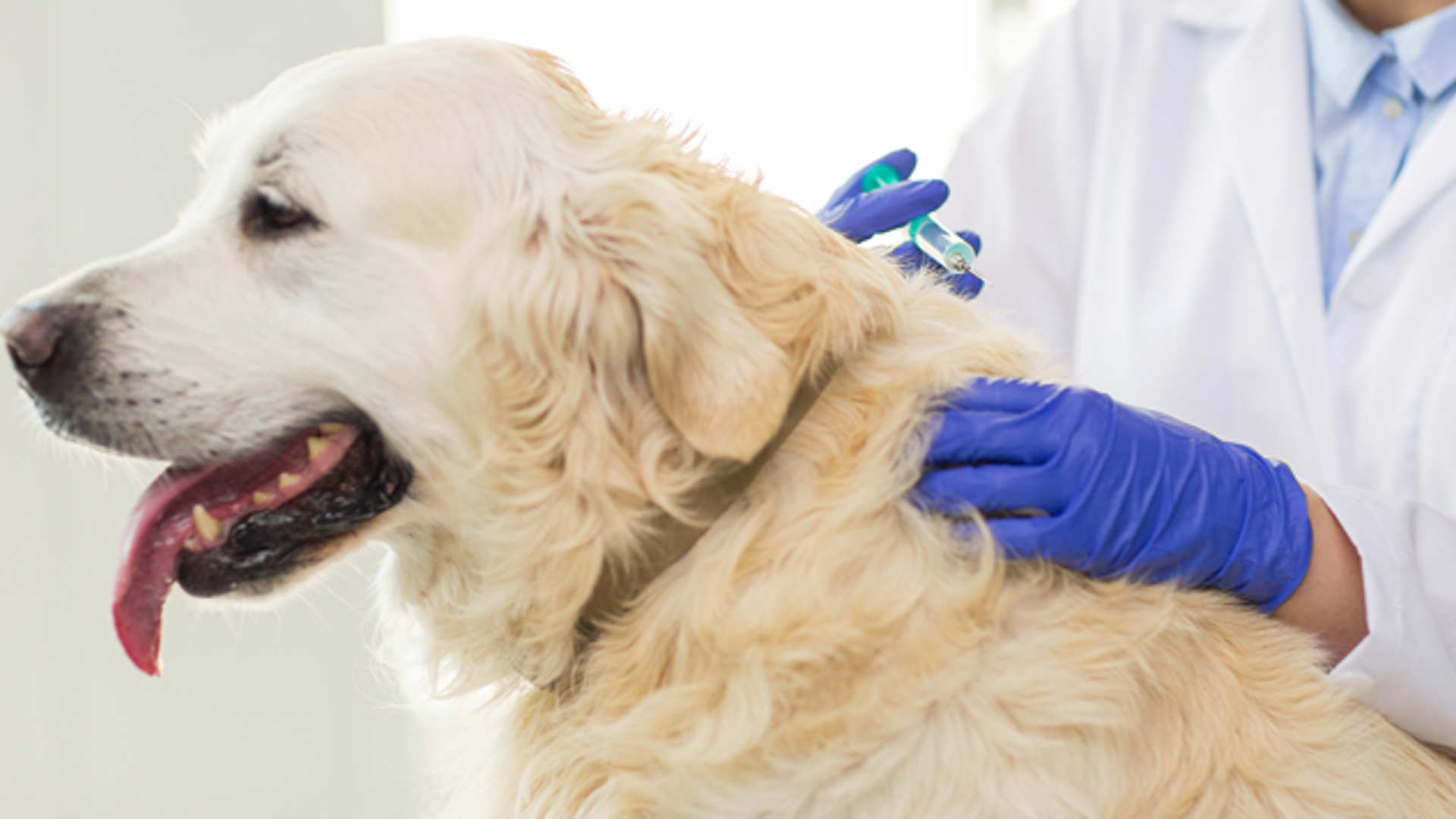Entertaining your Dog at Home
There are many changes you can make at home to keep your dog entertained with a more enriching environment. Here are a few examples to get you started:

We offer a multi-disciplinary referral service to veterinary surgeons across the UK. We accept emergency referrals 24 hours a day, 7 days a week.
In order to book an appointment with us, you need to request a referral to us from your pet’s usual veterinary practice.
Telephone: 0117 394 0513
Location: Langford House, Langford, BS40 5DUOutstanding veterinary care for horses and ponies in the heart of Somerset
Stables Equine Practice are experienced in dealing with horses and ponies involved in all competitive disciplines - from breeding, to pleasure horses and companions.
Telephone: 01749 830 666 / emergency pager 01379 673 827
Location: Conkerfield, Pennybatch Lane, Wookey, Nr. Wells, BA5 1NHYour local vets for all your pets.
We aim to provide the best possible care for your animals to ensure they are kept fit and healthy throughout their lives. Our practice offers a caring, family feel to ensure that you and your pet receive a personal and friendly service.
Telephone: 01934 852 422
Location: Langford House, Langford, BS40 5DULangford Vets Farm Animal Practice have extensive experience in all aspects of the farming sector and smallholder work including dairy, beef, sheep, goats, camelids, pigs and poultry.
Telephone: 01934 852 650
Location: Langford House, Langford, BS40 5DUWe are a dynamic, customer focused business providing an extensive, high-quality range of laboratory tests across many species.
We also offer an internationally recognised cat genetic testing service to owners and breeders.
Telephone: 0117 394 0510
Location: Langford House, Langford, BS40 5DUAdvancing veterinary education and career excellence
Langford Vets are passionate about promoting career-long learning for veterinary professionals with advanced training and career development opportunities provided through our Langford Academy.
Telephone: Email: brm@langfordvets.co.uk
Location: Langford House, Langford, BS40 5DUInfectious diseases are everywhere – some are ubiquitous (i.e. endemic), others are more prevalent in other areas of the world or can only be spread by species of blood-sucking arthropods (i.e. fleas, ticks, flies) that we do not have in the UK. When compared to dogs that transiently visit the continent on holiday, imported or immigrating dogs have typically spent more time abroad and consequently have increased risk of exposure to infected dogs and the arthropods that transmit disease. However, any dog with a history of travel is at risk of carrying a ‘nonendemic’ infectious disease – one they are unlikely to be exposed to in the UK. Infrequently, some of the nonendemic infectious diseases discussed below are also found in non-travelled dogs – usually following prolonged exposure to travelled dogs.
The following guidance is for dogs that have been imported from continental Europe. The UK is a large importer of dogs for the pet market (60,000 dogs in 2020), and continental Europe is our closest land mass from which most of these dogs are sourced! For owners, your primary care vet should be the first point of contact regarding any queries. For vets, if you have any additional concerns these can be addressed to an infectious disease specialist.
Many infectious diseases can be silent, for a period at least, only becoming apparent months to years after travel, while some dogs will never show clinical signs. Knowing that these infections are present can allow early, and potentially more successful, treatment and avoid unexpected expenses in the future.
Ideally dogs should be screened before travel as, in a perfect world, dogs with some of these infections should not be imported due to human health risk. Where other infections are found, potential new owners should be made aware of the risk of on-going costs, risk of transmission to their other dogs, and even risk to their own health were they to import a dog with an existing infectious disease, known or otherwise. Most rescue shelters and breeders that import dogs are trying their best, albeit often with limited funds – but as there is no legal requirement to test dogs prior to travel against most infections this can be an area that some save money on. Some owners or rescue shelters intentionally import dogs with known infectious disease, often leishmaniosis and while their sentiment is admirable sometimes other infections are missed and their forever home may be unaware of the potential for future complications and heartbreak.
In most cases dogs should be tested as soon as possible following import. This means that, were an infection present, it can be identified and treated before the dog develops clinical signs or transmits disease to their new family. However, many of the screening antibody tests assess for historical exposure and it can take an extended period following infection to develop the antibody response required to give a positive result. For other infections, only certain stages of the disease process are detectable. This can result in an extended period of time following initial exposure to a positive result:
Ultimately, this means that follow-up testing is often recommended – dependent upon risk factors such as age, country of origin, other test results, time since travel, and clinical signs (if any) present. Imported or travelled dogs that spend additional periods of time abroad may be exposed during these subsequent events – such that repeat testing would be offered following every episode of travel.
All of the following infectious agents have been detected in imported dogs, most will have no clinical evidence of infection and can still transmit to other dogs and, in some cases, people.
Infectious agent |
Zoonotic risk |
Transmission risk to other dogs |
|---|---|---|
Brucella canis ‘brucellosis’ (human health concern) |
Yes – although risk is considered low in most cases, infection in humans is of great concern |
Yes – close contacts (this is a canine STD!) |
Leishmania infantum ‘leishmaniosis’ (really common) |
Technically yes – but transmission to humans has not been reported in areas without the sandfly, including the UK |
Yes – close contacts, including in areas without the sandfly (unknown transmission mechanism in most) |
Ehrlichia canis ‘ehrlichiosis’ (really common) |
No |
Yes – via ticks, so can occur without direct contact |
Dirofilaria immitis ‘heartworm’ (common) |
No |
No |
Babesia canis and other species ‘babesiosis’ (common) |
No for the common species, and very unlikely for the rare species. |
Yes – via ticks, so can occur without direct contact |
Anaplasma spp. ‘anaplasmosis’ (less common) |
Yes – Anaplasma phagocytophilum* can cause disease in humans. |
Yes – via ticks, so can occur without direct contact |
Hepatozoon canis ‘hepatozoonosis’ (less common) |
No |
Yes – via ingestion of infected ticks (albeit ones that are infrequently found in the UK), so can occur without direct contact |
Tick-borne encephalitis* (uncommon) |
Yes – via ticks |
Yes – via ticks, so can occur without direct contact |
* These are found in the UK already, albeit infrequently. Langford Vets does not routinely test for tick-borne encephalitis and, unlike most of the other infectious agents, dogs from North-Eastern Europe are at greater risk (as opposed to those from the Mediterranean basin). If requested samples could be sent out for this test.
As only limited data are available regarding the prevalence of Brucella canis within individual countries and as human infection has the potential for life-changing consequences we, along with many other veterinary practices, are taking a cautious approach. Langford Vets’ policy is to test all dogs with a history of travel to areas considered at higher risk – regardless of time spent there – for evidence of exposure to Brucella canis prior to performance of any diagnostic or surgical procedures. The countries included on the higher risk list are likely to change over time as more information becomes available.
Where dogs are presented in an emergency, we have capacity to barrier nurse them (at an additional cost) and will perform a patient-side screening test pending external testing.
In order of priority, in clinically well dogs:
The basic serological test for Ehrlichia, Anaplasma, and Dirofilaria is a combination test, which also includes a screen for Borrelia (the cause of Lyme’s disease). Where any of these initial screening tests are positive, additional infectious disease testing may be indicated (e.g. PCR of whole blood for Anaplasma or Ehrlichia if exposure was detected) along with general blood and urine profiles.
The vet will collect ~6ml of whole blood from a vein in the neck or the leg (patient dependent), after clipping and cleaning the site. From this, 2ml is placed into EDTA tubes for PCR testing and modified Knotts, while 4ml is placed into plain / clot tubes. In the laboratory, the serum is removed from the clotted red cells and tested.
Some tests would need to be deferred (e.g. heartworm screen), as the lifecycle of the parasite would not have reached a detectable stage before 6-7 months. Other tests, e.g. Leishmania and Ehrlichia serology, would be performed under caution – as a positive result could represent either infection or presence of maternal antibodies, while a negative result could occur in early infection. Alternatively, PCRs can be used to screen for Leishmania (whole blood or conjunctival swabs) and Ehrlichia (whole blood) – as PCRs confirm infection and can detect infection before antibodies are produced; however, PCRs are less valuable as a screening test against these infections for most dogs as they generally miss more chronic infections than the antibody tests.
We would request that any tests performed elsewhere (e.g. prior to import) are made available for review. Often not all the recommended tests have been performed prior to importation and sometimes the pet’s unique microchip number has not been recorded on the paperwork (raising concern that we have results from a different dog). Ultimately, with the additional potential for a lag between exposure and a positive screening result additional tests would be recommended at some point; however, the timing of this screening would vary (dependent upon test(s) already performed, country of travel, and time since importation) and would be considered on a case-by-case basis.
Sadly, this is unlikely.
Having said that, every policy is different – so if you have any questions, these should be directed at your insurance provider.
Cats can also be infected with various infectious agents nonendemic to the UK that have the potential to cause clinical signs, these include Babesia felis, Leishmania infantum. Dirofilaria immitis and Ehrlichia chaffeensis. It is important that your vet knows if your cat has a travel history, because this can influence the recommended tests were your cat to become sick. However, currently we do not recommend routine screening of well cats with a history of travel as, when compared to dogs, they have both a lower risk of infection and lower risk of onwards transmission to others (due to limited direct contact with other cats outside of their household and limited access to the parasites that transmit these infections).
There are many changes you can make at home to keep your dog entertained with a more enriching environment. Here are a few examples to get you started:

Find out how to support your cat dog or rabbit especially as they move into their senior years.

